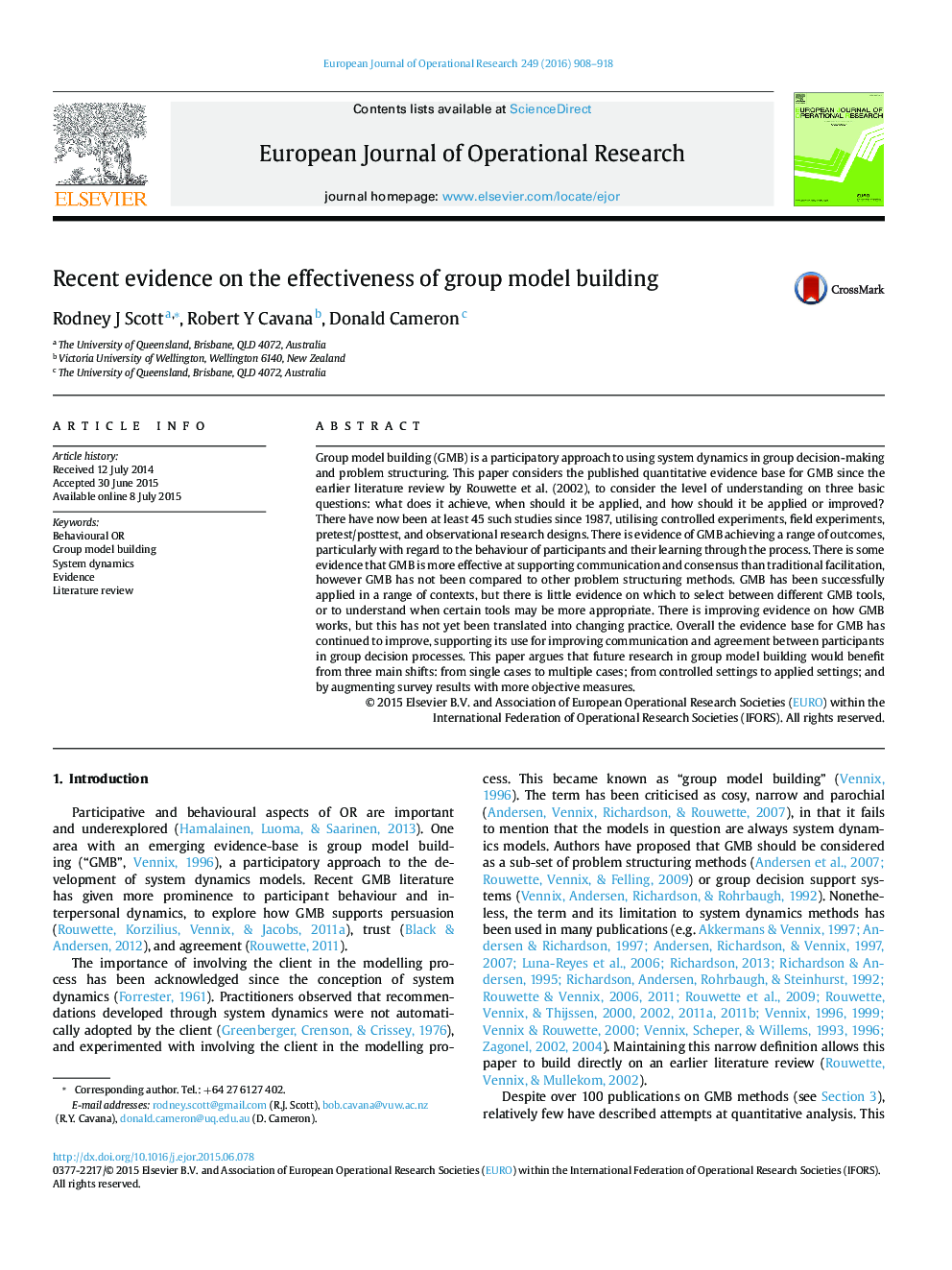| Article ID | Journal | Published Year | Pages | File Type |
|---|---|---|---|---|
| 6896014 | European Journal of Operational Research | 2016 | 11 Pages |
Abstract
Group model building (GMB) is a participatory approach to using system dynamics in group decision-making and problem structuring. This paper considers the published quantitative evidence base for GMB since the earlier literature review by Rouwette et al. (2002), to consider the level of understanding on three basic questions: what does it achieve, when should it be applied, and how should it be applied or improved? There have now been at least 45 such studies since 1987, utilising controlled experiments, field experiments, pretest/posttest, and observational research designs. There is evidence of GMB achieving a range of outcomes, particularly with regard to the behaviour of participants and their learning through the process. There is some evidence that GMB is more effective at supporting communication and consensus than traditional facilitation, however GMB has not been compared to other problem structuring methods. GMB has been successfully applied in a range of contexts, but there is little evidence on which to select between different GMB tools, or to understand when certain tools may be more appropriate. There is improving evidence on how GMB works, but this has not yet been translated into changing practice. Overall the evidence base for GMB has continued to improve, supporting its use for improving communication and agreement between participants in group decision processes. This paper argues that future research in group model building would benefit from three main shifts: from single cases to multiple cases; from controlled settings to applied settings; and by augmenting survey results with more objective measures.
Related Topics
Physical Sciences and Engineering
Computer Science
Computer Science (General)
Authors
Rodney J Scott, Robert Y Cavana, Donald Cameron,
